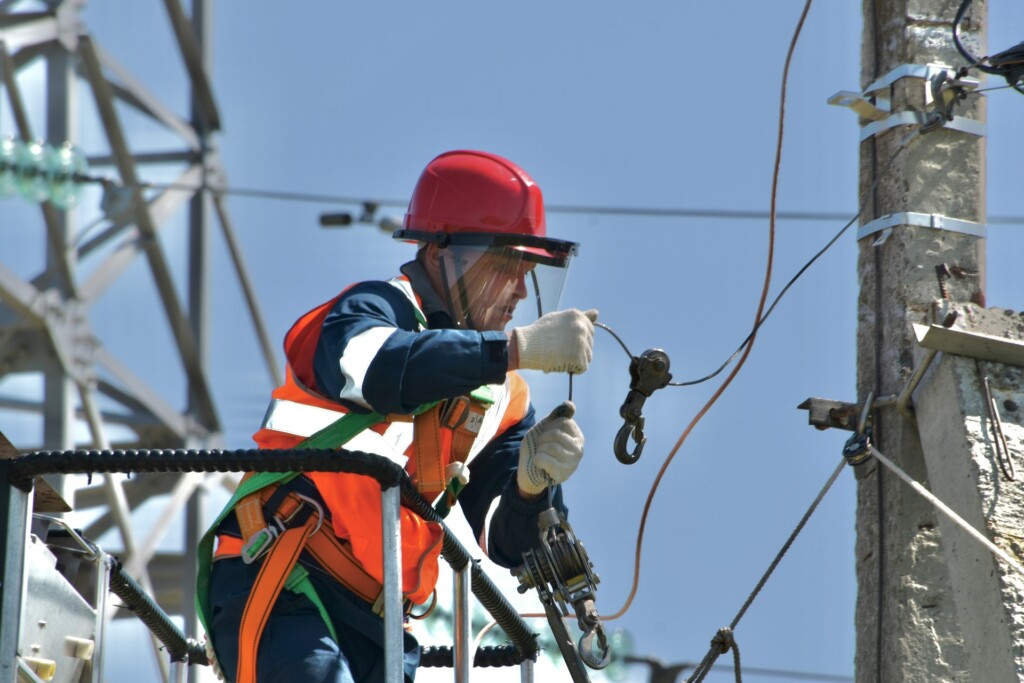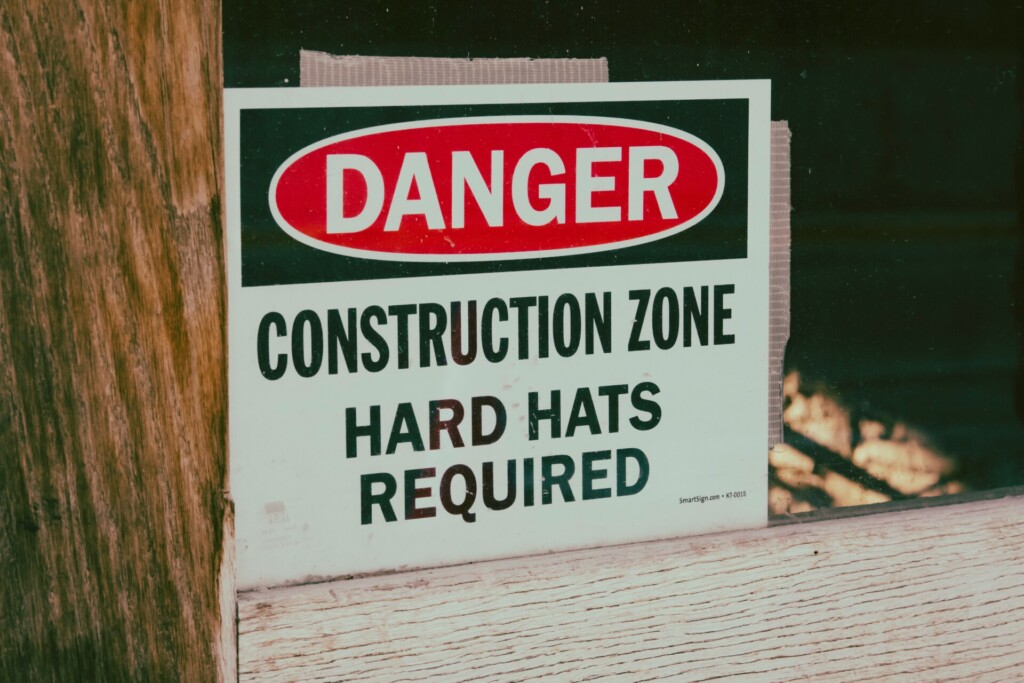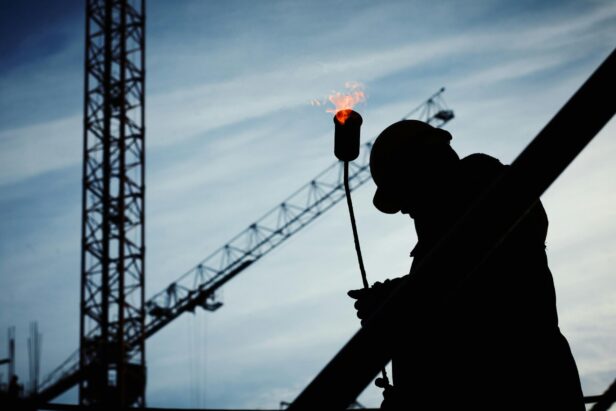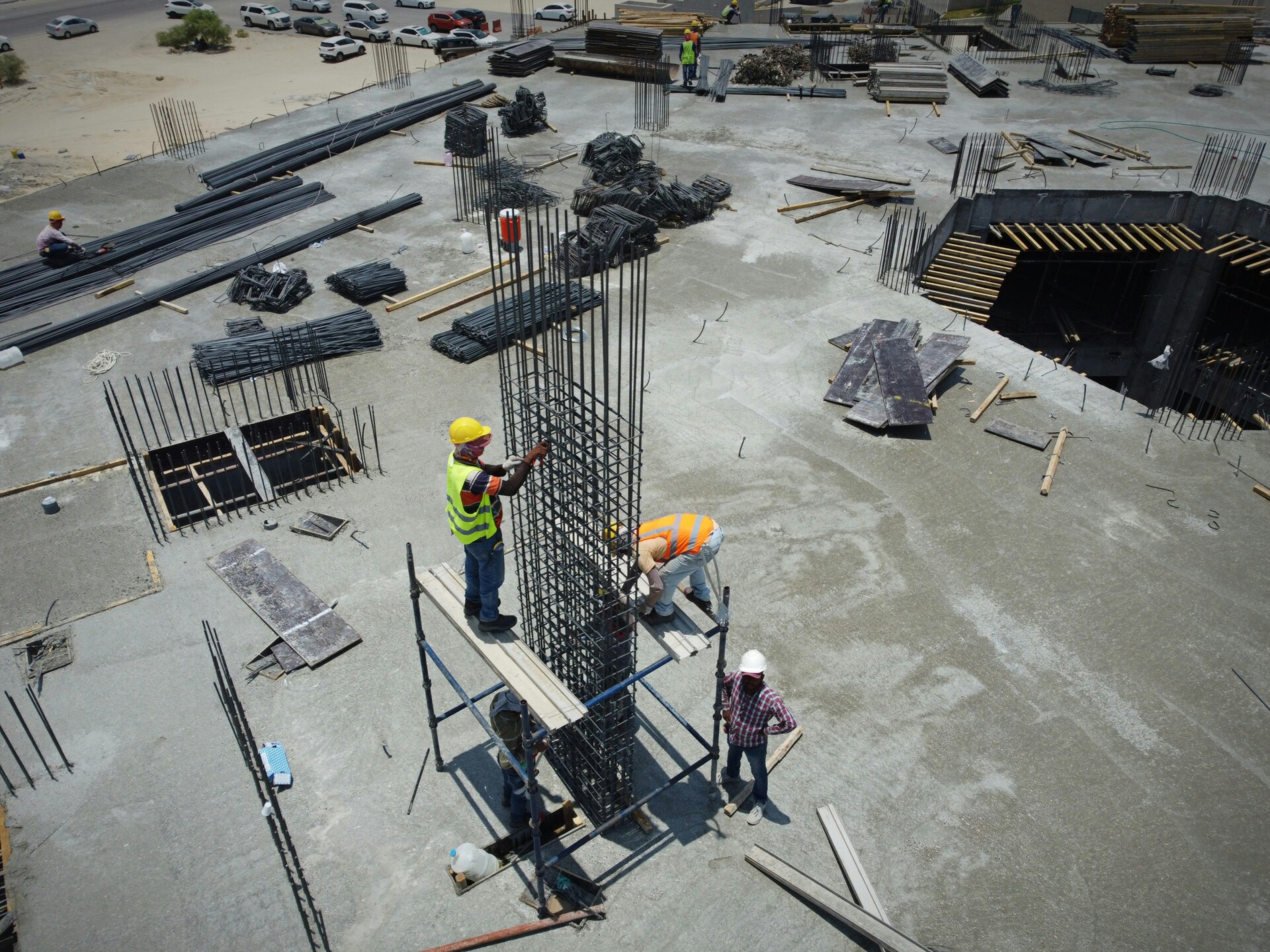Every time you flip a light switch, turn on a faucet, or send a text message, you depend on utility construction. These projects create the underground and overhead networks that power cities, deliver clean water, and keep communities connected. Utility construction encompasses the specialized field of building energy transmission systems, telecommunications infrastructure, water supply networks, and wastewater management systems.
We build the essential infrastructure that supports modern life across residential, commercial, and industrial developments. This work covers everything from electric distribution lines and gas pipelines to stormwater systems and telecommunications cables that enable infrastructure access for entire communities.
Which Systems And Specialties Fall Under Utility Construction?

We categorize utility construction into underground and overhead systems that serve distinct functions across communities. Underground networks handle the majority of infrastructure, including water supply systems, wastewater collection networks, stormwater drainage, natural gas distribution pipelines, telecommunications cables, and electricity distribution conduits. These buried systems protect essential services from weather damage and maintain community aesthetics while delivering reliable performance.
Some projects incorporate district heating and cooling systems through underground thermal distribution networks. These specialized installations require precise temperature control and insulation standards that differ from traditional utility work.
Powerline Contractors
Electrical distribution contractors design, construct, and maintain overhead and underground power systems that deliver electricity from substations to end users. These specialized crews follow strict electrical codes and safety protocols due to the inherent dangers of working with high-voltage systems. We coordinate with utility companies to ensure proper isolation procedures and maintain clearance requirements during installation and maintenance activities.
Powerline work often involves pole installation, transformer mounting, cable pulling through conduit systems, and connection to distribution panels. Crews use specialized equipment like bucket trucks, cable pullers, and testing instruments to verify system integrity before energization.
Water And Sewerage Contractors
Water and sewerage specialists focus on clean water distribution and wastewater collection systems that protect public health and environmental quality. These contractors design pipe networks, install pumping stations, and build treatment facility connections that meet stringent regulatory standards. Pipeline work requires expertise in materials like ductile iron, PVC, and HDPE, each suited to specific applications and soil conditions.
Sewer network construction involves precise grading to maintain proper flow velocities and prevent blockages. We install manholes, cleanouts, and service connections while coordinating with environmental agencies to protect waterways and groundwater resources.
Telecommunication Infrastructure Contractors
Telecommunications contractors build the fiber optic networks, cellular tower foundations, and data center connections that enable modern communications. These projects require coordination with multiple service providers and strict adherence to signal transmission standards. Cable installation involves trenching, conduit systems, and vault construction that accommodate future expansion and maintenance access.
Wireless infrastructure work includes tower erection, equipment shelter construction, and power system installation. We coordinate with federal and local agencies to ensure compliance with radio frequency regulations and zoning requirements.
Contractor Operational Scope
Utility contractors handle troubleshooting, emergency repairs, and planned maintenance across industrial and commercial projects. This work often requires heavy equipment operation, traffic control coordination, and vegetation management to maintain system accessibility. We deploy excavators, trenchers, and directional boring machines to install new services while minimizing surface disruption.
Commercial projects typically involve larger capacity systems and more complex routing requirements than residential work. Industrial installations may include specialized materials handling, chemical resistance considerations, and enhanced safety protocols for hazardous environments.
How Do Utility Contractors Plan And Deliver Projects From Bid To Closeout?
Utility construction moves through a structured sequence that begins with competitive bidding and extends through final acceptance. We approach each phase with careful preparation to control costs, manage risks, and deliver projects that meet utility standards.
Bidding And Work Orders
Contractors submit bids to utilities based on defined scopes and specifications. Once awarded, we develop detailed work orders that assign crews, establish timelines, and define specific tasks for each project segment.
This phase requires precise cost estimation and resource allocation. We review utility requirements, assess site conditions through initial surveys, and prepare crews with the right skills and equipment for the work ahead.
Administrative Setup
Project success depends on thorough administrative preparation from the start. We organize schedules that coordinate with utility operations, secure all necessary permits, and establish documentation systems for tracking progress and compliance.
Material coordination becomes critical during setup. We verify delivery schedules, coordinate with suppliers, and establish staging areas that support efficient workflow without disrupting existing utility operations.
Planning And Design Support
Constructability drives our planning approach. We conduct potholing to verify existing utility locations, develop modeling for complex installations, and establish routing that minimizes conflicts with existing infrastructure.
Zone maps break projects into manageable segments, typically organized by stations or lots that crews can complete efficiently. We create logistics plans that coordinate equipment movement, develop grading strategies for proper drainage, and establish budgets that track costs against approved estimates.
Risk and opportunity registers document potential issues and improvements identified during planning. Procurement logs track fixtures, early structural elements, and prefabricated components to ensure timely delivery and installation.
Plan Review Process
The fresh eyes meeting serves as our final checkpoint before mobilization. This collaborative review brings together project managers, crew leaders, and key stakeholders to examine schedule flow, verify zone boundaries, and stress-test logistics assumptions.
We evaluate risks identified in earlier planning and confirm procurement timing aligns with construction sequences. This review often catches issues that look manageable on paper but could create problems in the field.
Site And Soil Assessment
Soil conditions directly impact trenching methods and project costs. We conduct borings and test pits to understand soil composition, bearing capacity, and groundwater levels that affect excavation approach.
Dewatering requirements influence both equipment selection and construction timing. These assessments help determine appropriate segment sizes that balance productivity with manageable excavation depths and soil stability.
Site Access And Environmental Impact
We build temporary access roads where needed to support equipment movement and material delivery without damaging existing infrastructure. Access planning considers traffic control requirements and minimizes disruption to surrounding operations.
Environmental impact mitigation remains a priority throughout construction. We implement erosion control measures, manage stormwater runoff, and coordinate with environmental agencies to ensure compliance with applicable regulations.
What Field Practices Improve Safety, Quality, And Cost?

Utility construction demands rigorous field practices that keep workers safe, maintain quality standards, and control project costs. We implement systematic approaches that address the inherent risks of underground work while ensuring long-term system performance.
Safety First: Protecting Workers And The Public
Utility work presents serious hazards from trenching, equipment operation, and exposure to existing utilities. We prioritize comprehensive safety programs that go beyond basic compliance. Our qualified teams follow established standards to protect workers and the public while reducing property damage risks.
Every project begins with hazard identification and safety planning. We conduct daily safety briefings, maintain proper personal protective equipment, and ensure all team members understand emergency procedures. Utility work often occurs in high-traffic areas or near occupied buildings, making public safety protocols critical to our operations.
Quality Control Through Systematic Verification
We install utility systems with systematic quality controls that prevent costly issues later. Quality checklists guide every installation phase, ensuring consistent execution regardless of crew or project complexity. We verify elevations and inverts using precision levels, maintaining accurate grade requirements throughout the installation.
Accurate as-built documentation captures exactly what we installed and where. These records become essential for future maintenance, repairs, and system expansions. We document changes from original plans immediately, preventing discrepancies that create problems for property owners and utility operators.
Test Before You Cover: Prevention Over Correction
We test utility systems before backfilling or paving to avoid expensive rework. CCTV inspection of new sewer lines reveals joint issues, debris, or alignment problems while corrections remain straightforward. Flow testing and pressure testing confirm system integration before we move to final restoration.
This approach prevents the 5-9% rework costs that research identifies in poorly managed utility projects. Early testing catches problems when fixing them costs hundreds of dollars rather than thousands. We schedule testing as work progresses rather than waiting for project completion.
Proper Backfill Techniques And Materials
Correct backfilling prevents settlement that damages pavement and structures above utility installations. We select appropriate backfill materials based on soil conditions and compaction requirements. Density testing verifies that backfill meets specification requirements before final restoration.
Our crews understand that different utility types require specific backfill approaches. Water and sewer lines need bedding materials that provide uniform support, while electrical and telecommunications installations require protection from mechanical damage during compaction.
Lean Construction Methods For Efficiency
We apply lean methods that eliminate waste while maintaining quality. One-piece flow allows us to plan, build, and finish short segments completely before moving forward. This approach reduces material handling, minimizes rework, and keeps crews focused on value-adding activities.
Daily improvement discussions help our teams identify bottlenecks and inefficiencies. We avoid busywork that consumes time without advancing the project. Continuous improvement becomes part of our field culture, driving better performance on every project.
Management Rigor Across All Project Elements
Strong project management prevents delays, cost overruns, and safety incidents. We maintain comprehensive safety programs, quality administration, and schedule management throughout utility construction. Specification conformance and submittal coordination ensure we deliver exactly what the design requires.
Change order management and materials management prevent disruptions that cascade through project schedules. We establish clear communication protocols and reporting systems that keep all stakeholders informed. Document control ensures critical information reaches the right people at the right time.
Environmental conformance and final as-built documentation complete our management approach. Without this rigor, utility projects face delays, significant rework costs, safety losses, and regulatory exposure that harm both contractors and property owners.
When Should Owners Use Dedicated Construction Management Or An Owner’s Engineer?
Complex utility projects such as grid modernization initiatives, large-scale infrastructure upgrades, or multi-phase construction programs present challenges that can stretch internal teams beyond their capacity. We recognize when owners need additional support to ensure successful project delivery.
Identifying The Need For Specialized Support
Several project characteristics signal the need for dedicated construction management or owner’s engineer services. Large capital investments, compressed schedules, or projects involving multiple contractors create complexity that benefits from specialized oversight. When internal staff lack specific experience with utility construction or when regulatory compliance requirements are extensive, external expertise becomes valuable.
Technical complexity also drives the need for specialized support. Projects involving new technologies, challenging site conditions, or integration with existing systems require focused attention to constructability and specification conformance. We see this frequently in transmission projects where coordination between multiple utilities and contractors demands dedicated project management resources.
Benefits Of Dedicated Construction Management
Dedicated construction management brings focused expertise to project execution. This approach improves accountability by establishing clear ownership of project outcomes and provides consistent oversight throughout construction phases. Schedule management becomes more rigorous, with dedicated resources monitoring critical path activities and coordinating between trades.
Quality assurance improves when dedicated teams focus on specification conformance and site monitoring. We implement systematic inspection protocols, verify materials and workmanship, and maintain documentation standards that protect owner interests. Cost control benefits from dedicated procurement management and change order oversight that prevents budget overruns.
Safety culture strengthens when construction management teams prioritize worker protection and regulatory compliance. This focus reduces project risks and protects owners from potential liability exposure. The combination of technical expertise and project focus typically results in reduced delays, fewer rework issues, and improved overall project outcomes.
Owner’s Engineer Services For Independent Oversight
An owner’s engineer provides independent technical oversight across all project phases, from initial planning through final commissioning. This role focuses on protecting owner interests by ensuring contractor performance meets specifications and industry standards. Unlike construction management, the owner’s engineer maintains independence from construction execution while providing technical review and oversight.
The owner’s engineer manages procurement processes more efficiently by developing clear technical specifications and evaluating contractor proposals against owner requirements. This approach often results in better value for construction investments and reduces the risk of specification conflicts during construction. Project phases benefit from continuity when the same engineering team supports both design review and construction oversight.
Early constructability reviews represent a critical service where owner’s engineers catch design issues before they become field problems. We review drawings and specifications against field conditions, identify potential conflicts, and recommend modifications that prevent costly changes during construction. This proactive approach saves time and money while improving final project quality.
Owners may engage qualified teams like ours to provide these specialized services when internal resources need supplementation or when project complexity demands focused expertise. The decision depends on project scope, internal capabilities, and risk tolerance for potential delays or quality issues.
Conclusion And Next Steps

Utility construction delivers the foundation that keeps communities and businesses operating. Power lines energize facilities, water systems maintain public health, sewer networks prevent contamination, and telecommunications enable commerce. We coordinate these critical installations by focusing on practical execution rather than theoretical planning.
Define scope boundaries early, select contractors with proven utility experience, and establish clear project plans that include zone mapping and logistics coordination. Conduct soil borings and geotechnical assessments before trenching begins to prevent costly surprises during installation. Use quality checklists throughout construction phases, maintain accurate as-built documentation, and perform flow testing and pressure testing before backfilling trenches. Verify compaction testing results to prevent future settlement issues that compromise system integrity. For major utility initiatives involving grid modernization or complex infrastructure upgrades, dedicated construction management or an owner’s engineer provides independent oversight that reduces risk and improves project outcomes.
Ready to discuss your utility construction project? Contact EB3 Construction to explore how we can support your next infrastructure initiative.




